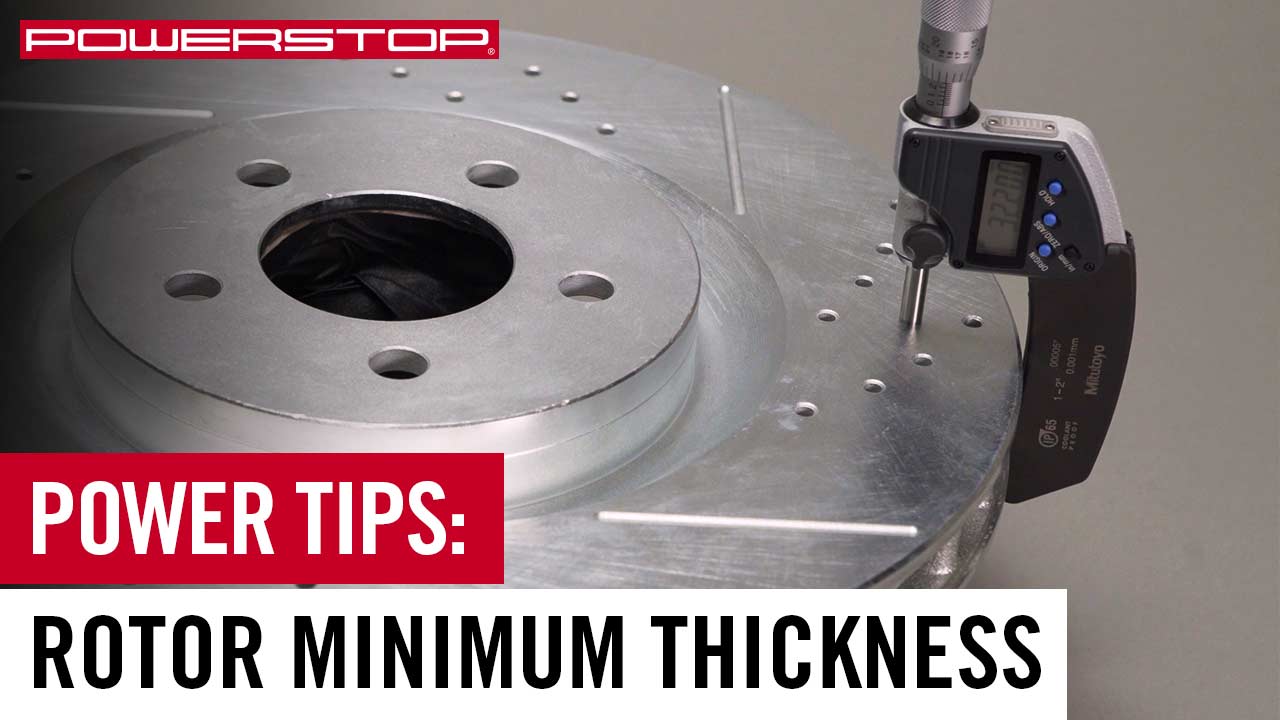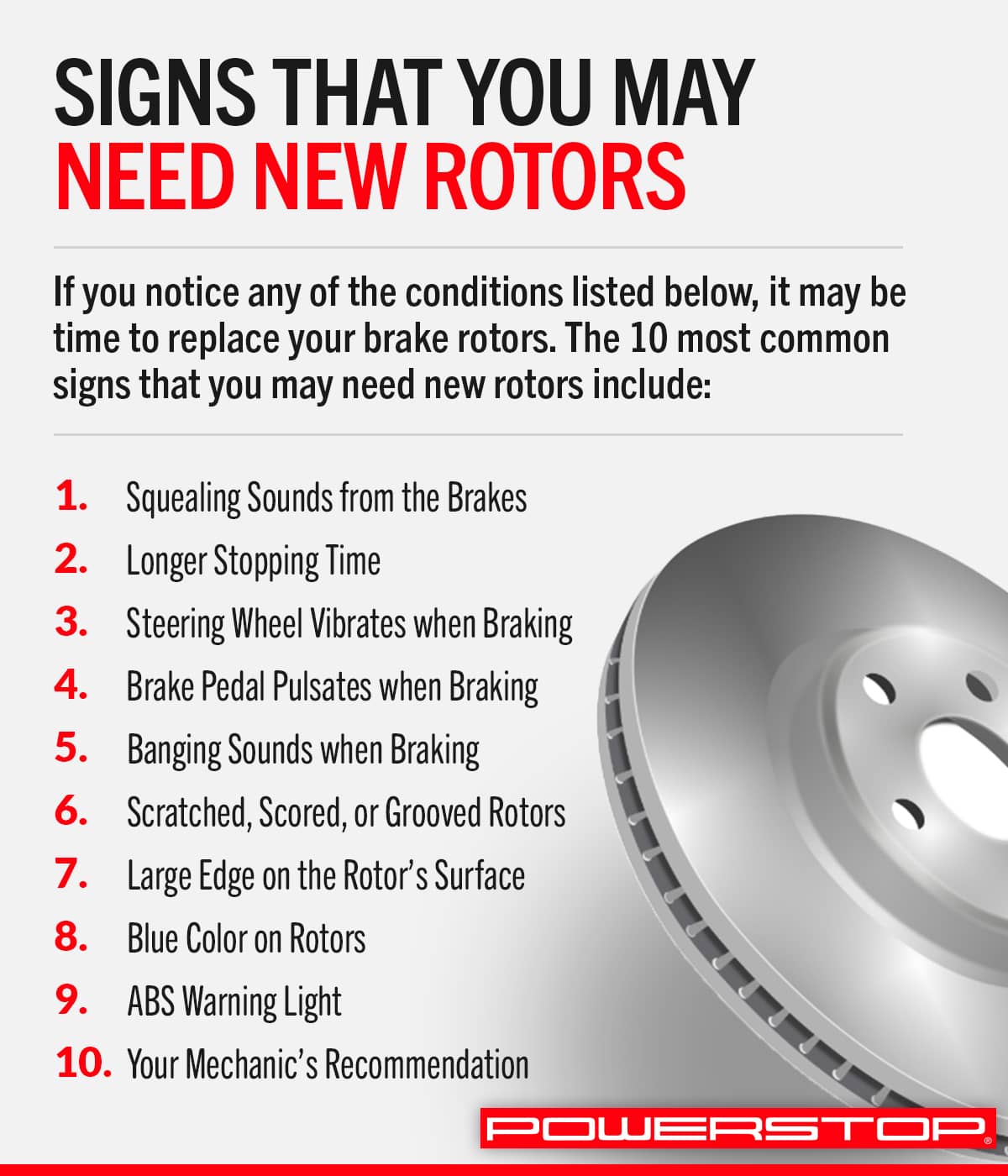Rotors should be thick enough to meet the minimum operational level, which is typically engraved on the sides or hat of the rotor. The thickness of rotors is important for optimal braking performance and heat dissipation.
Thicker rotors have the ability to absorb more heat before experiencing brake fade. Additionally, larger rotors generally provide better braking performance. To determine the minimum rotor thickness, use a micrometer to measure the thinnest point on the rotor’s surface where it meets the brake pads.
It is essential to regularly inspect rotors and replace them when they reach the minimum thickness to ensure safe and effective braking.
Understanding Rotor Thickness
Understanding rotor thickness is crucial for maintaining optimal braking performance. The thickness of a rotor directly affects its ability to dissipate heat and provide effective stopping power. It is important to determine the minimum rotor thickness to ensure safe and reliable operation.
Several factors can affect rotor thickness, including the type of vehicle, driving conditions, and personal driving habits. Heavy-duty vehicles and those used for towing or carrying heavy loads may require thicker rotors to handle the increased demands.
Minimum rotor thickness specifications can usually be found engraved on the sides, veins, or hat of the rotor. To determine the minimum thickness, a micrometer can be used to measure the thinnest point where the rotor meets the brake pads. If the rotor thickness falls below the recommended minimum, it is time for rotor replacement to maintain optimal braking performance and ensure safety.

Credit: www.brakebleeder.com
Effects Of Rotor Thickness On Braking Performance
| Effects of Rotor Thickness on Braking Performance |
| – Optimal Rotor Thickness for Braking Performance |
| – Impact of Rotor Thickness on Heat Dissipation |
| – How Different Thicknesses Affect Brake Fade |
When it comes to rotor thickness, it plays a crucial role in determining the braking performance of a vehicle. The optimal rotor thickness is essential for ensuring effective braking. Thicker rotors provide more surface area for heat dissipation, which is crucial for preventing brake fade. Brake fade occurs when the brakes overheat, causing a decrease in stopping power. By having thicker rotors, the heat generated during braking is spread out over a larger area, reducing the chances of brake fade.
Additionally, different rotor thicknesses can have varying effects on heat dissipation. Thicker rotors generally have better heat dissipation properties, allowing them to handle high temperatures without losing braking efficiency. On the other hand, thinner rotors might struggle with heat dissipation, leading to brake fade and decreased braking performance.
In conclusion, the thickness of rotors significantly impacts braking performance. Optimal rotor thickness ensures effective heat dissipation and reduces the risk of brake fade. As a result, it is essential to consider the appropriate rotor thickness for your vehicle to maintain optimal braking performance.
Guidelines For Replacing Rotors
When it comes to replacing rotors, it’s important to know how thick they should be. The minimum operational level of a rotor can be found engraved on the sides, within the veins, or on the hat of the rotor. The bigger the rotor, the better the braking performance will be.
| When Should Rotors be Replaced? |
| Rotors should be replaced when they are worn down to their minimum thickness requirements. It is important to regularly check the thickness of your rotors to ensure they are within the acceptable range for safe braking. |
| Minimum Thickness Requirements for Replacement |
| The minimum thickness for rotors can vary depending on the make and model of your vehicle. It is recommended to consult your vehicle’s owner manual or contact a professional mechanic to determine the specific minimum thickness requirements for your rotors. |
| How to Measure Rotor Thickness |
| To measure rotor thickness, you can use a micrometer. Place the micrometer at the thinnest point on the rotor’s surface where it meets the brake pads. Take the measurement and compare it to the minimum thickness requirements. If the rotor is worn beyond this point, it should be replaced. |

Credit: www.powerstop.com

Credit: www.powerstop.com
Frequently Asked Questions Of How Thick Should Rotors Be
What Is Minimum Rotor Thickness?
The minimum rotor thickness refers to the minimum operational level of a rotor. This information can be found engraved on the sides, within the veins, or on the hat of the rotor. It is important to measure the rotor’s thickness to determine if it needs to be replaced.
Thicker rotors generally provide better braking performance.
Are Thicker Brake Rotors Better?
Thicker brake rotors provide better braking performance as they can absorb more heat before overheating. The larger the rotor, the better the braking power. The minimum thickness of rotors can be found engraved on the rotor or within the veins.
How Thin Do Rotors Need To Be Replaced?
The minimum thickness for replacing rotors can be found engraved on the sides, veins, or hat of the rotor. To measure, place a micrometer at the thinnest point where it meets the brake pads.
How Much Wear Is Acceptable On Rotors?
The acceptable wear on rotors depends on their minimum thickness, which can be found engraved on the sides, within the veins, or on the hat of the rotor. Thicker rotors generally provide better braking performance. To check the rotor’s thickness, use a micrometer at the thinnest point where it meets the brake pads.
Conclusion
The minimum operational thickness of a rotor is crucial for its performance. It can be found engraved on the rotor or within the veins of the rotor. Thicker rotors have better braking performance, as they can absorb more heat without overheating.
To determine if your rotors need replacement, measure the thinnest point where it meets the brake pads using a micrometer. Remember, maintaining the appropriate thickness of your rotors is essential for safe and efficient braking.







